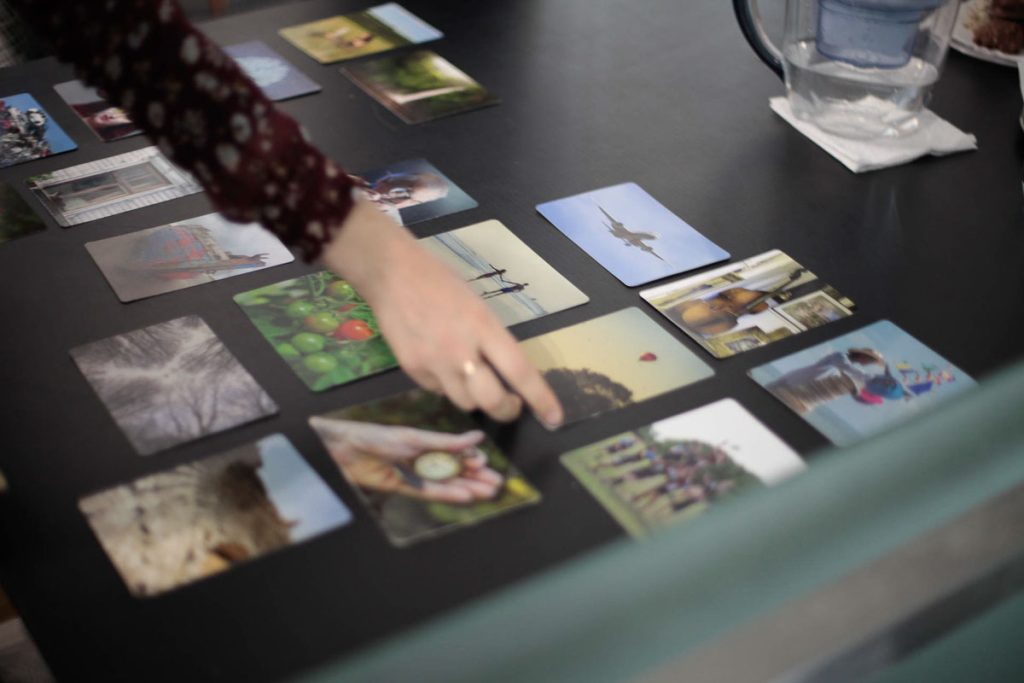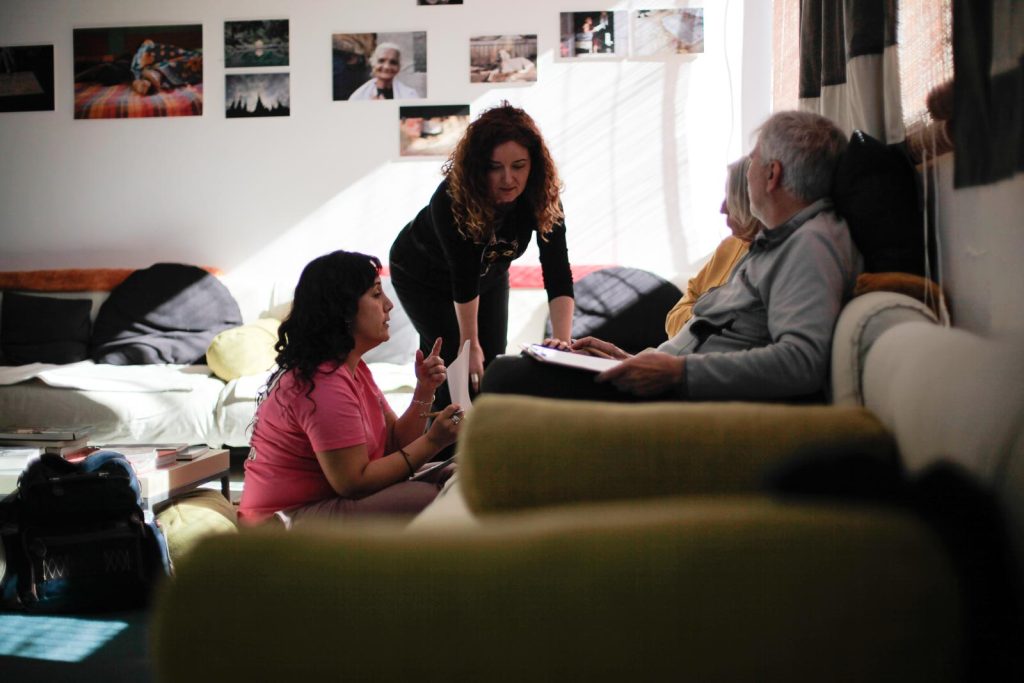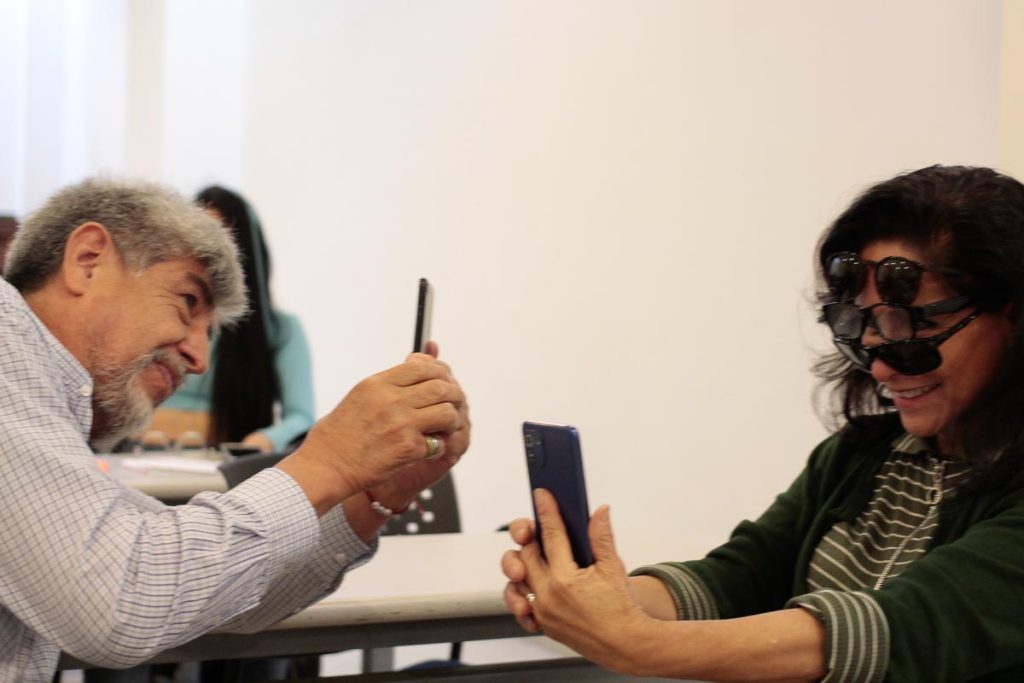I speak through my photographs more intricately, more deeply than with words
Richard Avedon
Participatory photography methodologies have proven to be powerful and effective tools for social intervention. For over 25 years, I have applied these techniques in my work as an accredited psychologist and social intervention expert. Initially, my approach was intuitive, but today, these methodologies are supported by a strong foundation of scientific research and proven effectiveness. ANDANAfoto started back in 2015 as a participatory project aimed at showcasing and highlighting the beauty of the Valencian region of l’Horta Sud through the eyes of its residents.
Throughout my career, I have implemented numerous projects using participatory photography. Today, I want to invite you to explore how the Photovoice technique and participatory photography intersect with psychology and neuroscience and how their application can make a meaningful impact on communities.
I invite you to learn more about the fundamentals of this tool, its scientific significance, and the benefits it offers both individually and collectively.

Photovoice is a technique that blends photography, storytelling, and community conversations to empower individuals and communities. This method allows them to document and reflect on their lives and environments in a visual and accessible way.
Through photography, participants capture everyday scenes to represent a tangible reality, facilitating reflection, discussion, and interpretation of both the subject and the surrounding context. This process gives a visual voice to communities that are often not represented in decision-making.
The technique helps bring to light stories that have been silenced or overlooked in an ethical and aesthetically mindful way. With a communicative, artistic, and educational approach, Photovoice upholds the rights of individuals to be seen and to participate actively in their communities.
Origin
The Photovoice technique has gained credibility and popularity in recent years. Photovoice was developed in the 1980s by Caroline Wang, a health educator at the University of Michigan, and Mary Ann Burris, a women’s health specialist at the Ford Foundation. Both authors defined Photovoice as “a participatory photography methodology that seeks to give voice through images, creating new opportunities to reflect on and represent community issues in a creative and personal way.”
In their rationale, they proposed three fundamental objectives:
- Knowing the individual and collective strengths and weaknesses of the participatory group.
- Fostering critical conversations and a deeper understanding of the subject through group discussions of the photographs taken.
- Presenting the information gathered to the relevant authorities.
The primary goal of the Photovoice technique is to promote active community participation in pursuing changes that improve the situation of often overlooked or marginalized groups. By giving them a voice and power through photography and its accompanying narratives, Photovoice fosters the development of collective critical awareness.
The information obtained allows us to understand a community’s strengths and opportunities, fight against its weaknesses, and avoid its threats in search of improvement.This tool increases empowerment, co-learning, critical discussion, empathy, equity, community development, and social change.
Photovoice generates knowledge and promotes community reflection and intervention, transforming participants into active collaborators in the project. When addressing issues that truly matter to participants, the principle that “the affective is effective” applies. In this way, the photographs captured reflect personal views, concerns, and reflections, raising new questions that can lead to the exposure and improvement of the initial situation. This approach ensures that solutions are more relevant and sustainable, as they are grounded in the authentic needs and experiences of the community.
Photography is a great tool for expressing experiences, emotions, and perspectives. This methodology encourages self-exploration and self-knowledge while facilitating conversations and understanding within the community.

The origin of the Photovoice technique is not without influence; its inspiration comes from various sources, including:
Paulo Freire’s Education for Critical Consciousness, which encourages the development of critical awareness through conversation, reflection, and action. It aims to empower students to question and transform their social reality, promoting critical literacy and education as a liberating and participatory practice. This methodology already includes the use of photographs and drawings to represent community problems, encourage critical conversations, and promote community change.
The Feminist Theory, which focuses on analyzing and challenging gender inequalities. Its objective is to give a voice to women and other marginalized groups and advocate for equal rights and opportunities. This theory emphasizes the need to challenge patriarchal structures and advocates for positive social changes that enable all genders to fully participate and be represented in society.
Documentary Photography, which employs images to capture and reveal realities, aiming to raise awareness and promote social change. This style of photography captures authentic moments and situations, evoking empathy and reflection in the viewer. For more information, explore “The Social Role of Photography” in this article.
Dialogic Learning, an educational approach based on equal dialogue and open communication among all participants that is grounded in claims of validity rather than power. Rooted in the principles of Habermas, Bakhtin, and Wells, it promotes the collaborative construction of knowledge and the development of critical thinking. Its seven principles include egalitarian dialogue, cultural intelligence, transformation, the instrumental dimension, creation of meaning, solidarity, and the equality of differences. It is used to interpret and create knowledge through photography by fostering reflection, critique, and intersubjective dialogue.
Where is it used?
Use
Historically, the Photovoice technique has been used in three key areas: social action, health, and education. It can be used by all age groups, from children to older adults.
Today, it is used across multiple areas to empower communities and drive social change, including:
- Social action: Tackling issues such as immigration, older adults, disadvantaged populations, and homelessness.
- Public health: Focusing on areas such as nutrition, mental health, diseases, and maternal and child health. Facilitating self-exploration, identifying barriers to a healthy lifestyle, and promoting changes in health policies.
- Education: Encouraging critical thinking in students, exploring social and cultural issues, and documenting the school environment through photography.
- Gender equality: Highlighting women’s experiences and advocating for gender equality.
It is a versatile and powerful methodology that can be applied across multiple areas. It promotes empowerment, critical reflection, and social change. Its ability to visually capture and convey experiences makes ita valuable tool for both research and community intervention.

Psychology and Photovoice
Photography has an intrinsic power to evoke emotions and facilitate self-knowledge. In this context, participants process and reflect on the experiences photographed.
Narrative theory suggests that we, as individuals, give meaning to our lives by creating personal narratives through which we shape our identity. With Photovoice, images are created, and narratives are shared, facilitating a greater understanding of experiences and emotions.
Stories shape human life—the ones we share with others and the ones we tell ourselves.
Jerome Bruner
The Neuroscience of Photography
Neuroscience offers valuable insights into why images have such a powerful impact on our emotions and behaviors. Research has shown that visualizing images activates the amygdala, a part of the brain crucial for emotional processing. According to a Harvard University study, “visual images can trigger memories and emotions faster and more intensely than words.”
Thought is visual. We think in images. The human brain is highly adapted to process visual information. This capacity for visual thinking is essential to Photovoice, as it enables participants to deeply connect with their emotions and experiences through the images they create.
We think in images before we think in words.
Rudolf Arnheim
The ability of images to evoke memories is another crucial aspect of the impact of this technique. Neuroscience has shown that visual images are stored in the brain more effectively than words, making it easier to recall meaningful experiences. Additionally, visual encoding enhances long-term memory by activating multiple brain areas, including those linked to emotion and memory. This explains why photos evoke vivid memories and strong emotions—a phenomenon leveraged in Photovoice to deepen self-exploration and self-knowledge.

How do you start a project with the Photovoice technique? The essential steps
1. Identifying the objective or issue.
Clearly define the problem or issue the project will address. This could be a health issue, a community challenge, a social justice matter, or education.
Identify the participants, ensuring they are community members directly affected by the issue. For example, in a project in Malawi, the goal was to document challenges related to food insecurity. Women from the community were selected as participants to capture their daily experiences.
2. Building a team
It is important that the project be carried out by professionals with experience in participatory photography, psychology, and/or education and strong community facilitation skills.
Involving community leaders and local organizations or associations is valuable, as it can enhance the project’s credibility and acceptance. Include teachers, social workers, or psychology professionals as part of the facilitation team.
3. Project design and training
Plan the project’s structure, outlining key phases such as training, photography sessions, reflection, and the exhibition or presentation of the work.
It is essential to provide the group with training on basic photography techniques and ethics. Participants must fully understand the project’s objective and how the images will be used. At this point, it is important to consider whether to use digital or disposable cameras. However, today, phone cameras are often the most practical option.
It is important for the group to understand that the images must respect the participants’ anonymity and should not offend or degrade anyone. Additionally, the cultural norms of certain groups must be respected. A signed consent form may be included to authorize the use of the photos for teaching and research purposes.
5. Choosing the issue and taking photographs
It is essential to clearly define the general framework of the project, centered around a specific title or questions. For example, if we are investigating the consumption of plastics, we might ask the following general questions:
Do we use plastic responsibly?
Have recycling bins influenced my daily life in any way?
What can I change in my daily life regarding the consumption of plastics to contribute to environmental sustainability?
Participants are responsible for selecting the specific content they wish to document within the general framework of the project. In this way, they will create images of their surroundings that reflect their experiences and perspectives on the issue.
6. Reflection and analysis
Participants will select the images they consider most meaningful. We are now at the core of the Photovoice technique, using the SHOWED method to guide participants in explaining why they took each photograph and its personal significance. (Wallerstein & Bernstein, 1988; Wang & Burris, 1997).
Include a line for the photograph title and five questions:
- S (See): What do you see here?
- H (Happening): What is really happening?
- O (Our lives): How does this relate to our lives?
- W (Why): Why does this problem exist?
- E (Educate): Can we use this photo to educate?
- D (Do): What can we do about it?
In this way, each participant recounts and shares the stories behind their photographs, providing emotional and personal context.

7. Presentation, exhibition, and dissemination
Organize a public exhibition of the photographs and narratives. You can do this in a gallery, community center, or online.
Invite community members, the press, and policymakers to enhance the visibility and impact of the project.
8. Evaluation and follow-up
Collect feedback from participants and the community regarding the project process and outcomes, acknowledging or driving recommendations to influence policies and practices that address the identified issues.
Of course, we must maintain contact with the community to support the implementation of proposed actions and assess their long-term impact.
Photovoice enables individuals to become storytellers of their own lives,
which can be a profoundly empowering and therapeutic experience.
Caroline Wang
Photovoice is a powerful methodology integrating participatory photography, psychology, and neuroscience to empower communities and drive social change. It enables individuals to become storytellers of their own lives, fostering self-knowledge and personal transformation.
The Photovoice technique, both visual and narrative, is a testament to the power of images to connect with our deepest emotions and drive meaningful change for individuals and society.
If you have a project created using Photovoice and would like to share it, feel free to do so in the comments section at the end of this article. We would love to know about it.
Cómo citar este artículo
Al citar, reconoces el trabajo original, evitas problemas de plagio y permites acceder a las fuentes originales para obtener más información o verificar datos. Asegúrate siempre de dar crédito y de citar de forma adecuada.
How to cite this article
By citing an article, you acknowledge the original work, avoid plagiarism issues, and allow access to the original sources for further information or data verification. Make sure to always give credit and cite appropriately.
ANDANAfoto. (July 25, 2024). "Photovoice: Between Participatory Photography, Psychology, and Neuroscience". ANDANAfoto.com. | https://andanafoto.com/en/photovoice-between-participatory-photography-psychology-and-neuroscience/.
Some RESOURCES for you to continue researching:
Guide On How to Create a Photovoice Project from the National Institute of Educational Technologies for Teacher Training, including a downloadable guide.
Video: Photo Voice: A Versatile Technique for Education
Photovoice (photovoice.org) is an entity specializing in designing and delivering participatory photography projects. In this article, the term “photovoice” refers to the academic theory rather than to the organization of the same name.
Use Of the Photovoice Technique as A Community Tool
References:
Wang, C. C., & Burris, M. A. (1997). Photovoice: Concept, methodology, and use for participatory needs assessment. Health Education & Behavior
Wang, C. C. (2003). Using Photovoice as a participatory assessment and issue selection tool: A case study with the homeless in Ann Arbor.
Catalani, C. & Minkler, M. (2010). Photovoice: A review of the Literature in Health and Public Health. Health Education & Behavior.
Arnheim, R. (1969). Visual thinking. University of California Press.
Harvard University. (n.d.). Studies on the impact of visual stimuli on the brain. Retrieved from Harvard Study.

